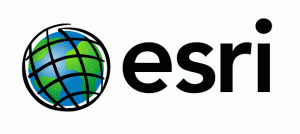This morning, Jack Dangermond, Esri President, started off Esri’s annual Federal GIS Users Conference. Dangermond reminded the audience of the challenges that society faces today, and how geography is more important than ever before.
GIS is a technology that enables organizations to find new value from their data. By visualizing information through maps, organizations can identify trends and patterns to improve their decision-making.
As Dangermond reminds us, geography is a science that helps us to better understand our world, both the content and the context. With GIS, organizations can bring together all their data to analyze and visualize information. With this new understanding, government is starting to tackle large-scale challenges facing society. With GIS, organizations are combating issues like pollution, climate change, poverty and improving health outcomes – all giving individuals better access to information.
Esri’s ArcGIS software has truly turned GIS into a platform that brings clarity to a complex world. Now, anyone can use GIS to conduct basic spatial analysis. GIS can work on mobile, in browsers, on desktops and anywhere needed to empower the government professional. But although the technology has helped organizations understand their data, and extract meaning from it – there are several modifications that Esri must continue to make to meet market demands. From the plenary session this morning, I can tell that Esri is certainly up to the challenge.
Below are some areas where Esri is focusing on developing and improving their technology:
1. Real time and big data
Governments are creating more data than ever – with more sensors and automation being used; agencies are creating and managing more data, which is ripe for finding ways to improve government services. GIS can help coalesce and analyze the various formats and kinds of data agencies are collecting, at real-time speeds.
2. Web GIS & Online content
Now, organizations can use GIS to create compelling online content, whether it’s through Story Maps or emerging web-GIS applications, it’s easier than ever before to build maps directly in your browser, and share stories across the world. Also, many of Esri’s offerings are responsively designed, so regardless of device, maps are accessible and easy to interact with. Also, the ease of use on the web allows organizations to look at the same data and updated instantly by connecting to the cloud.
3. Apps Development and Creation
Esri is creating a series of apps that make it easy to replicate and use for anyone in government. Whether it’s around smarter communities or fighting pollution, apps can be replicated and easily deployed by users. They also are creating easy to use app building environments for developers. The web-app builder was released last month, and helps developers quickly build GIS apps, and share broadly with their community.
4. Open Data Initiatives
Open data programs are helping to create a more transparent and collaborative government. Dangermond announced that Esri is working on creating a platform that contains all open data sites, as a single repository of information.
5. Security, Compliance & Interoperability
Dangermond affirmed Esri’s commitment to the strictest government standards, like FISMA and FedRAMP. Working with groups like OSIsoft, Esri continues to build partnerships to remain interoperable with government agencies.
Before the break, Dangermond re-affirmed Esri’s commitment to their users. “Esri is totally focused on you and that’s what gets us up in the morning,” said Dangermond. With this philosophy, Esri is poised to continue to develop world-class GIS technology, able to meet their needs of users and transform the business of government.

Photo: FlickR Creative Commons – Kenneth Lu





Nice recap, Pat! Sounds like the conference got off to a great start!